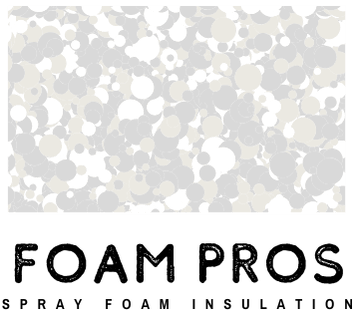We will get back to you as soon as possible.
Please try again later.
Open-cell vs. Closed-cell Spray Foam
Now that you have decided to go with spray foam insulation, there is another decision that you need to make; Open cell or closed cell?
Apart from reducing electricity bills, foam insulation also stops heat-flow and airflow. Open or closed cells are both efficient. However, there are certain differences between them.
In this article, we will discuss some of these key differences, and as always, we will help you make an informed decision.
Finding The Differences
Closed and open-cell foams insulate homes in different ways. The cells are referred to as open or closed because of the difference between the bubbles that make up the foam.
Open Cell Spray Foam
It is filled with cells that are deliberately left open. This makes the material softer and more flexible to use. The open-cell foam expands after it expands. Therefore, it is a lot easier to reach difficult spots with open-cell foam. The open-cell spray foam is usually less expensive than the closed-cell. However, it cannot insulate a house, as well as a closed-cell foam would. Therefore, it is not ideal for locations with extreme weather conditions. The open cell can also help with sound reduction.
Closed Cell Spray Foam
On the other hand, closed-cell foam is made up of cells that are completely pressed together. The closed spray foam totally obstructs airflow from inside or outside the home or office. It is ideal for areas with potential for high winds and is also resistant to moisture and mold.
Closed-cell foam is the best option for robust insulating in cases where space is an issue. With closed spray foam, you have better control over the building's internal temperature. Also, its rigid nature adds structural integrity to the building.
What Are The Differences?
Spray foam is made of polymer; therefore, it expands in space. This allows it to block air from penetrating it effectively.
The comparison is tricky because one method isn’t necessarily better than the other. Each method has its strengths and weaknesses. Therefore, your choice of an ideal spray foam depends on your needs.
Some key differences include;
- In terms of density, the closed-cell foam is far denser than open-cell foams.
- As we said in the previous article, the higher the "R-value" (resistance to heat flow) signifies how well they insulate. Here, the closed-cell foam has higher ratings and is better at keeping the heat in or out of a structure.
- One of the most important differences can be seen when applied. The opened cell foam expands more than the closed-cell when it is sprayed.
- Closed-cell spray foam is more rigid and stable. It is a better insulator.
- The closed-cell spray foam has moisture-resistant qualities that make it more impervious to water damage.
- In terms of cost, the closed-cell is costlier than the open cell foam.
Which Insulation Should I Use?
Ultimately, your ideal choice of insulation highly depends on your budget and what your insulation goals are.
We are here to help you make your decision and offer you the best possible services.
Foam Pros Saskatoon
Foam Pros Saskatoon is a specialist spray foam insulation company that services the surrounds of Saskatoon. We specialize in expanding foam insulation for ceilings and walls in both commercial and residential spaces.
Privacy Policy Contact Us More Resources
All calls from our site are sent to a qualified contractor.
Built by RenovateROI - A Home Contractor Marketing Company
